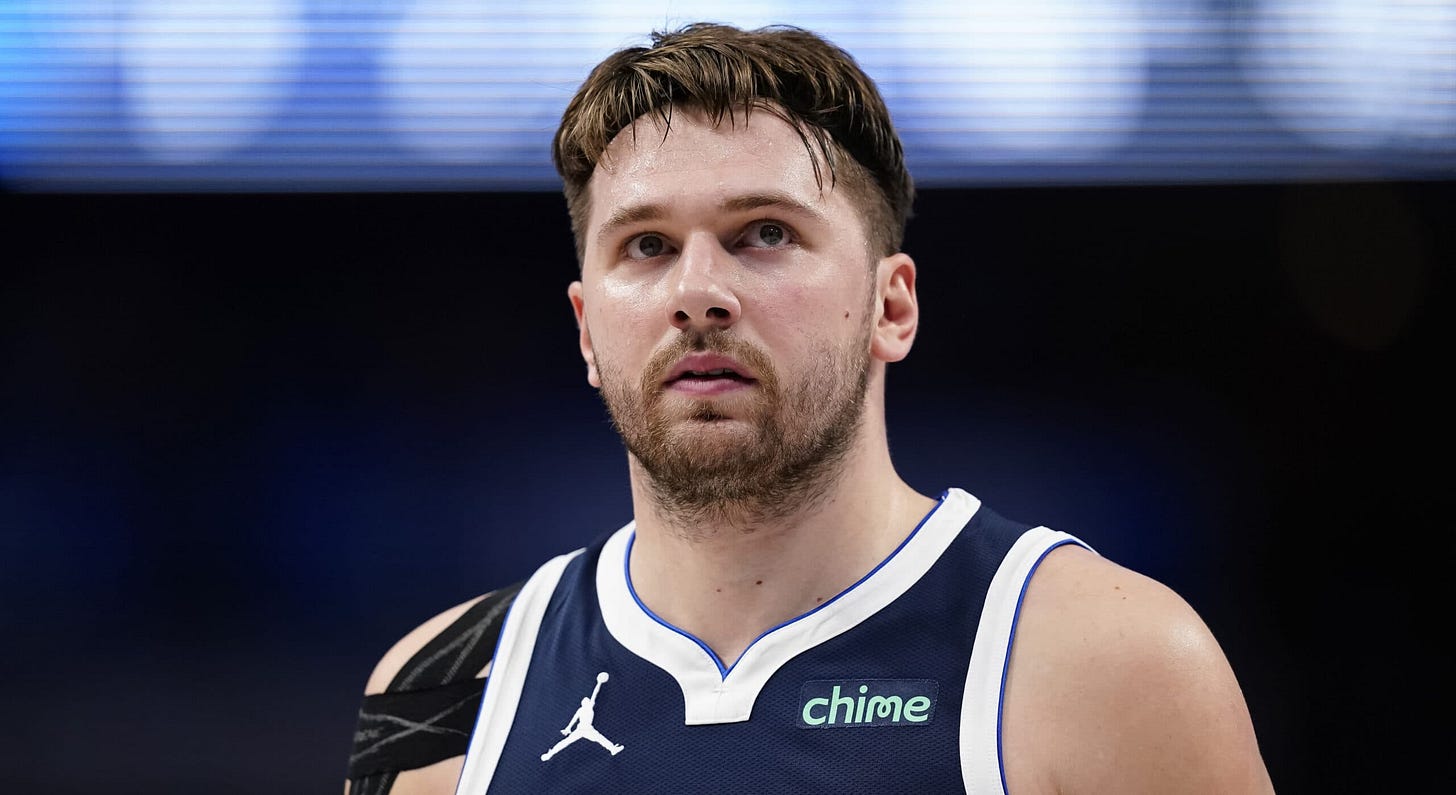In a Historically Offensive NBA Season, How Much Should Defense Factor into the MVP Decision?
The league is not offering much resistance on D, so struggles at that end might be less of a consideration than ever.
Defense, as you may have heard, is not really on the NBA’s menu this season.
Last Wednesday, a single-day record of 10 different teams scored at least 130 points (including four in losing efforts) as the league’s highest-scoring campaign in 54 years rolled on. Some of that is owed to the relatively quick pace of today’s game — recent seasons have seen teams rack up more possessions per contest than at any time since the run-n-gun 1980s — but even more of it is due to unprecedented levels of offensive efficiency (or defensive inefficiency, as the case may be).
Before the 2016-17 season, the NBA’s leaguewide record for offensive rating belonged to the 1986-87 campaign (108.3 points per 100), a benchmark that had seldom been approached in the three decades since. But from that point onward, a new single-season efficiency record has been set five separate times in seven seasons, and the current 2023-24 season is on track to shatter last year’s record by nearly a full rating point. In eight years, the NBA has made more offensive progress than in the 37 years that came before.
Against this backdrop, it’s fair to wonder how we should approach the importance of defense in conversations about player value. Last year’s MVP debate between eventual winner Joel Embiid and incumbent Nikola Jokić hinged in part on Embiid’s reputation (as a three-time All-Defensive selection) for impacting the game at both ends of the court — a longstanding criterion for MVP consideration. Since the first All-Defensive teams were awarded in 1968-69, 55% of MVP winners were also named All-Defense in the same year, and 65% made All-Defense at some point in their careers.
But in a modern game where defense is a dying art form, should that trend hold as strongly?
Take, for instance, the MVP candidacies of Luka Dončić and Tyrese Haliburton, the only members of the top 8 in my Estimated RAPTOR Wins Above Replacement to sport negative per-possession ratings on defense.
(Haliburton injured his hamstring while slipping on the court against the Boston Celtics on Monday night, and his timetable to play again isn't known. But he has been an MVP-level performer when healthy; here's hoping he returns soon.)
Yes, Dončić has only been a shade below average on D this season (he wants you to know about the effort he’s been putting in at that end of the court), but his Dallas Mavericks also rank 17th in defensive rating, a number that gets a lot worse when Luka is on the court. Yet, Dončić is also plainly carrying the Mavs: As Kyrie Irving was missing nearly a month of action, Luka was ranking second in points per game, tied for third in assists per game, and trailing only Embiid (39.2%) in his share of the team’s points plus rebounds plus assists piled up while he was on the court (35.7%).
If Dallas cashes in on its 75% playoff probability with Luka averaging 34, 9 and 8 while shooting a career-best 38% from downtown, it may not matter that he’s not playing any better defense than the rest of the league as a whole.
Haliburton is an even more extreme case. Last month, we documented how his Indiana Pacers were one of the most lopsided teams in NBA history in terms of favoring offense over defense. They currently rank No. 1 in offensive rating, versus No. 29 in defensive rating, and while their D has been slightly better when he plays, opponents are still scoring an astonishing 120.5 points per 100 on Pacers lineups that feature Haliburton. However, Haliburton is far from Indy’s only (or even worst) offender in that regard, and like Dončić, his offensive strengths had been more than offsetting his defensive weaknesses before his injury.
Haliburton still leads the league in assists per game by a margin of 1.7 dimes over Atlanta’s Trae Young (himself a member of the no-defense brigade). He also remains the league’s most efficient offensive player to carry a usage rate of at least 25%. Indiana’s playoff chances do hang somewhat in the balance (63%), and they are sure to decline if Haliburton misses extended time. But he has been far and away the biggest reason those odds are as high as they are.
An argument could be made that if Haliburton and Dončić — along with other brilliant-but-defensively-challenged guards such as Young, Milwaukee’s Damian Lillard, Philadelphia’s Tyrese Maxey and Jalen Brunson of the Knicks — are going to thrive on offense thanks to the league’s affinity for dribble drives and 3-pointers, they should also be held to account for their inability to stop the same tactics on the other side of the ball.
But this spaced-out style of play is precisely what the NBA wanted when it changed the rules around hand-checking and illegal defense — and what coaches have drilled into players for decades, in place of the less efficient shots taken by stars of the past. The culmination of all those changes might just be an early January Bucks-Pacers shootout where stops on D were nearly impossible to come by for either side.
Of course, my personal choice for league MVP so far — Oklahoma City’s Shai Gilgeous-Alexander — has solid defensive metrics to go with his stellar offense. But if ever there was a season when defensive struggles shouldn’t be a disqualifier for the game’s biggest individual award, it’s 2023-24. Because in the land of no defense at all, the player who makes up for it the most on offense might just be king.
Filed under: NBA





